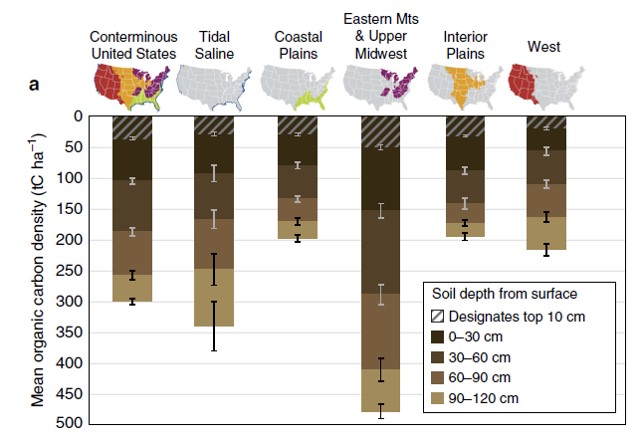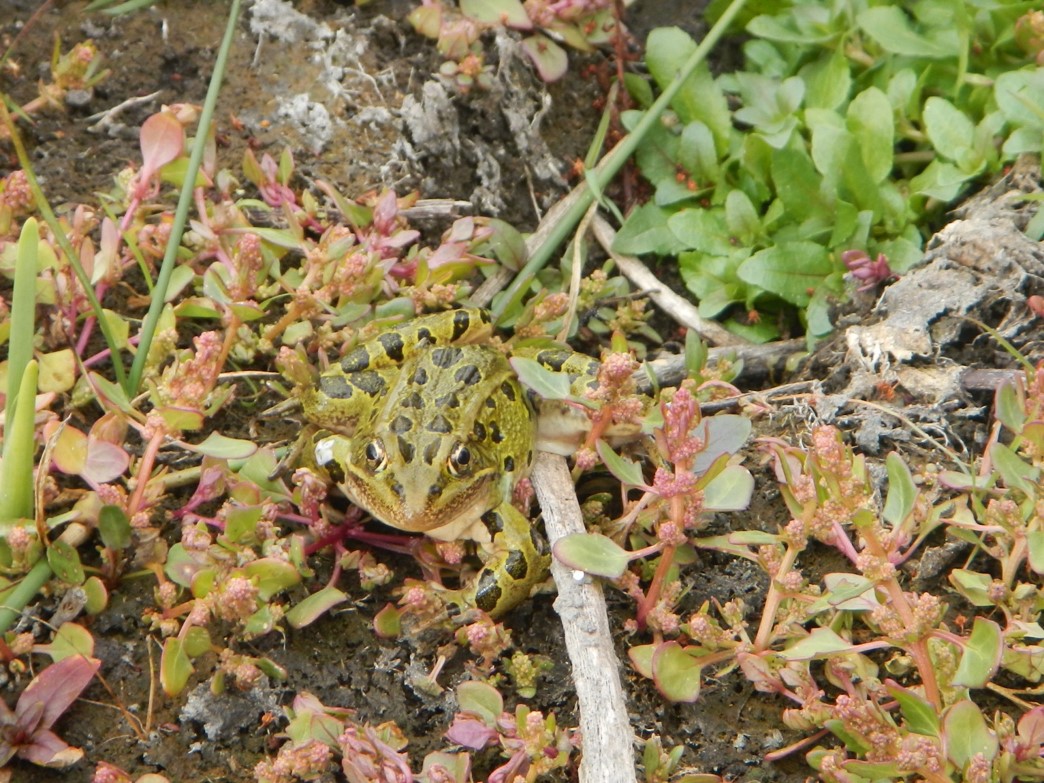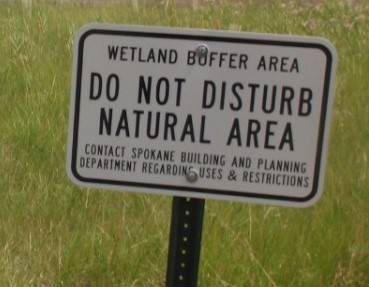Wetlands & climate change
Wetlands are vulnerable to climate change
Climate change is expected to impact wetlands due to changes in temperature and the timing and amount of precipitation. Coastal wetlands will also be impacted by sea level rise and changes in water chemistry. Those changes can alter wetland conditions and processes, including the types of habitat they provide, and their ability to manage water quality and flooding.
Wetlands mitigate climate change
Wetlands are a key player in global greenhouse gas budgets. Wetlands can be a source of some greenhouse gases, especially when disturbed, but they are also an important sink for greenhouse gases, where carbon is stored and prevented from entering the atmosphere.
Wetlands and adaptation to climate change
Many wetlands will play a role in our ability to manage risks from climate change. Wetlands are dynamic systems that experience cycles of wet and dry phases on seasonal, annual, and decadal scales. Because of that natural variability, many wetlands may be able to persist and continue to provide ecosystem services despite climate change. These ecosystem services include:
- Cleaning up polluted water.
- Slowing and storing floodwaters and snow melt.
- Recharging groundwater.
- Supporting habitat for many different native plant and animal species.
As the climate changes, many of those services will be in greater need.
Wetlands are vulnerable to climate change
Because of their position where land and waters meet, wetlands are at risk of damage from climate change. Effects of climate change on wetlands may include:- Loss of carbon stored in soil
- Changes in soil structure
- More frequent drying or flooding
- Changes in plant or animal communities
- Saltwater intrusion to freshwater coastal wetlands
- Changes in timing and amount of water available to wetlands fed by snow melt.1
Most of the carbon stored in wetlands is in the soil, where carbon cycling and microbial processes take a long time to develop. For example, the organic soil in peatlands can take thousands of years to develop- it can take up to 250 years for just one inch of peat to accumulate.2 Disturbance of those systems can result in loss of the carbon stored in those soils to the atmosphere.3 It is estimated that oxidation of disturbed organic soil contributes a substantial amount of CO2 to the atmosphere.1 Undisturbed wetlands store nearly twice as much carbon as wetlands disturbed by human activities.4 Warmer temperatures and changes in precipitation can also increase the loss of carbon stored in wetland soils.1 The combination of wetland disturbance from human activities and changes in climate may have greater impacts on wetland functions than either stressor would alone.1
Wetlands that rarely dry out are expected to shift to more frequent drying in some areas, and wetlands that currently are frequently dry may be lost in some areas. In other areas where precipitation is expected to increase or the timing is expected to change, wetlands that occasionally dry out may become wetter.5
Wetlands in some areas may be at greater risk. For example, montane wetlands are expected to be affected by higher temperatures, less snow pack, and earlier snow melt, resulting in a loss of more seasonal wetlands and habitats suitable for amphibians and wetland invertebrates.6 In addition to changes in temperature and precipitation, coastal wetlands will be impacted by sea level rise. In the Puget Sound region, sea level was estimated to rise gradually by 15 to 54 inches.7 A more recent effort to estimate sea level rise along Washington's coast includes changes in land elevation to generate relative sea level rise projections for different carbon emissions scenarios and based on the probability of occurrence.8 For example, they estimated a 50 percent chance of sea level to rise 2.7 ft in Olympia under a high carbon emission scenario, with a range of 2.0 ft -3.4 ft most likely (83-17% chance).9 This rise in sea level can result in saltwater intrusion to freshwater wetlands and water depths too deep for coastal wetland plants to survive. In areas where coastal wetlands are not able to move inland as the water rises, they may disappear.
The changes to wetlands that may happen with climate change can alter water quality, water quantity, and habitat functions.1, 10, 11 The response of individual wetlands to climate change will depend on:
- Exposure to altered climate conditions.
- Sensitivity to those changes.
- Potential impacts from exposure and sensitivity.
- Capacity to adapt.12
Wetlands mitigate effects of climate change
Coastal wetlands, undisturbed inland wetlands, and lakebeds are important carbon sinks.- Coastal wetlands sequester carbon efficiently and emit relatively little methane. They are estimated to sequester twice as much carbon in their soil than all tropical forests.13
- Older freshwater wetlands sequester more carbon than they emit.
- Forested wetlands sequester large amounts of carbon in tree biomass.
- Younger freshwater wetlands and disturbed wetlands can emit carbon until they develop sufficiently to sequester carbon.
Wetlands and adaptation to climate change
Adaptation is about enabling a response, promoting resilience, and creating resistance to the effects of climate change.16 Wetlands provide ecosystem services that will contribute to our ability to adapt to climate change. Three of the most commonly cited wetland ecosystem services are:- Their role in the hydrologic cycle.
- Their ability to improve water quality.
- The habitat they provide for Washington’s fish, wildlife, and native plants.
Wetlands in the hydrologic cycle
Climate change is expected to result in changes to the hydrologic cycle including altered precipitation and snow melt patterns. Wetlands can offset changes in precipitation and snow melt by storing water and reducing the effects of drought and severe storms. The cumulative presence of wetlands and lakes in a watershed can reduce flood flows during big storm events.13 Wetlands are also a source of surface and groundwater recharge in drying landscapes. They help keep waters flowing in streams, which helps offset the effects of summer droughts on salmon and other species. Even a small percent of peatland in a watershed can produce up to half of the stream flow.13 Coastal wetlands can protect against storm surges that can affect areas farther inland on the coast than in the past because of higher sea levels.Wetlands and water quality
Climate change can increase storm intensity, resulting in increased stormwater runoff, which carries contaminants harmful to water quality, salmon, and other wildlife. Wetlands are often referred to as a “kidney” in the landscape. Through cycles of wetting and drying, combined with the bacteria and plants that live in wetlands, they can sequester, alter, and / or assimilate contaminants such as excess nutrients, heavy metals, and petroleum products.17 Their role in water quality management will contribute to our ability to adapt to climate change.
Wetlands and habitat
Wetlands provide a refuge from the effects of climate change. Wetlands are among the most productive ecosystems in the world.2 They are used by more than two-thirds of terrestrial vertebrate species in Washington and Oregon, including 65 percent of mammals and 72 percent of birds.18 They are also key habitats for salmon development and amphibian reproduction.
Wetlands can reduce the effects drought and heat have on wildlife by providing a source of water or moist, cool microclimates. As the climate changes, wetlands also provide a corridor or stepping stone on the landscape that may help species move to better areas.19
In coastal areas, eelgrass beds can reduce the effects of ocean acidification, resulting in areas that may be able to support species like oysters and clams20 that have already been impacted by changes in water chemistry.21
Protecting wetland buffers from disturbance will help them persist in the face of climate change.
Impacts on buffers
Changes in temperature and precipitation can affect upland plant communities. This can affect forested buffers around wetlands because some trees may experience higher mortality as a result of climate change. Species once uncommon in an area may be encountered more frequently as their ranges shift with climate change. Current research indicates that moisture availability and impacts from land use change and altered disturbance regimes are more important to vegetation communities than changes in temperature.22Contact information
Amy Yahnke
Senior Ecologist
amy.yahnke@ecy.wa.gov
360-688-4263




